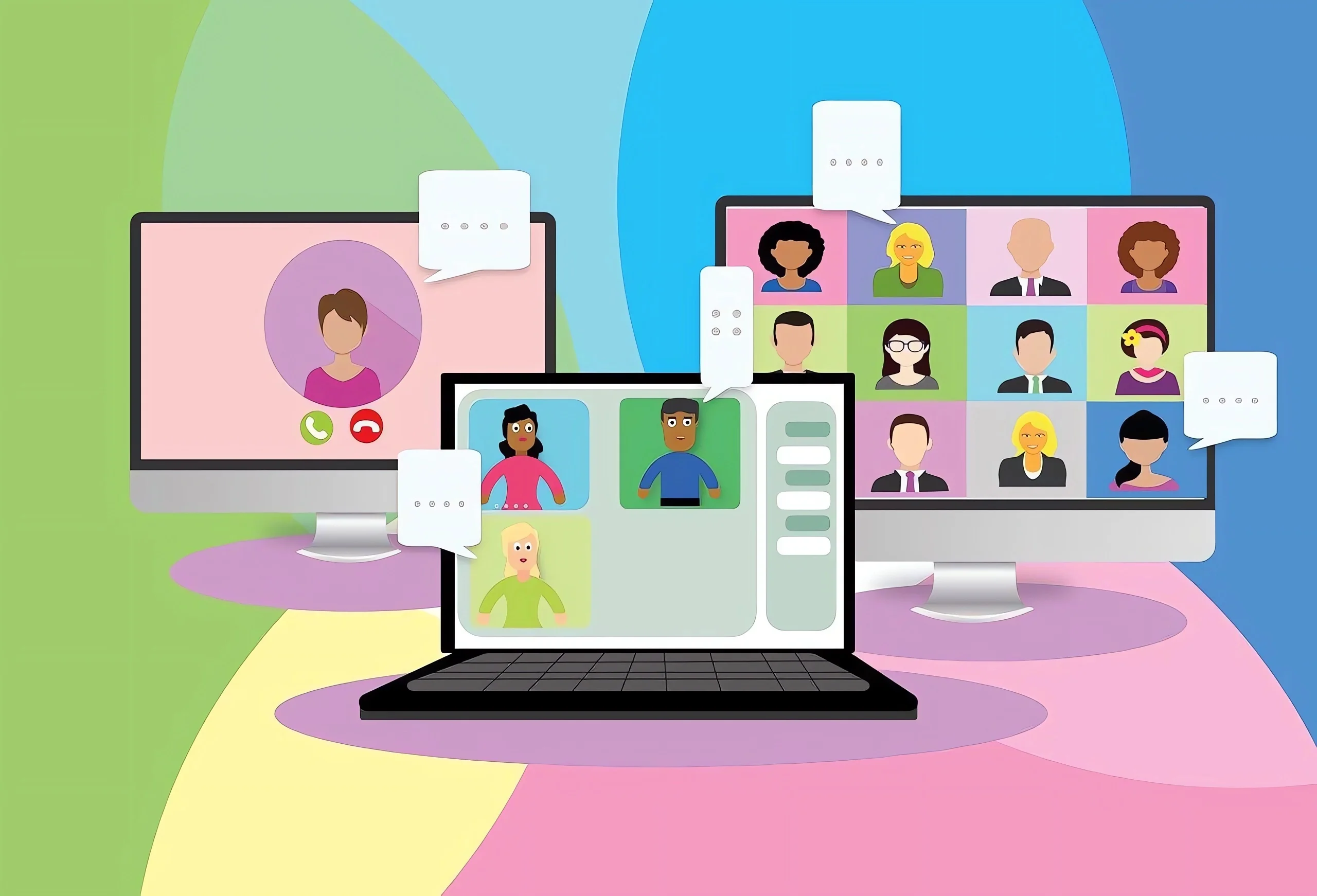Research has revealed that in 2023, 12.7% of full-time workers are engaged in remote work, and 28.2% follow a hybrid work arrangement. Companies are tackling the task of keeping productivity high and encouraging teamwork in a remote setup, and technology has become the key driver in making remote work smooth and effective.
In this article, we have discussed the latest solutions and tools that connect teams seamlessly and redefine how we work together, especially in the context of remote teams.
Amidst this evolution, we recommend you check out the best free VPN for iPhone, for adding an extra layer of protection to your remote work experience.
How is Remote Work Changing?

The trends in remote work are evolving as more organizations adopt flexible work arrangements. Employees now experience a shift towards a blend of in-office and remote work, known as hybrid models, creating a dynamic work landscape.
The technological impact on remote work is profound, with advancements in communication tools, project management software, and virtual collaboration platforms enhancing productivity and connectivity.
There’s also a noticeable shift in organizational culture as companies prioritize outcomes over traditional office hours, fostering a more results-oriented mindset.
This cultural change encourages autonomy, trust, and a focus on deliverables rather than physical presence.
What Challenges Arise in Remote Collaboration?

- Communication Barriers: Communication barriers emerge as teams grapple with the absence of face-to-face interaction. Efficient and clear communication becomes crucial to bridge the gap and ensure everyone is on the same page.
- Coordination Issues: Coordination issues arise as teams may face difficulties in synchronizing tasks and timelines, necessitating robust project management tools and methodologies
- Security Concerns: Security concerns become paramount in the remote work landscape, with the need for safeguarding sensitive data and ensuring secure communication channels.
However, overcoming these challenges requires a strategic approach, incorporating advanced communication technologies, fostering a collaborative mindset, and implementing robust security measures to create a seamless and secure remote collaboration environment.
Tech Solutions for Seamless Collaboration

1. Unified Communication Platforms
Unified Communication Platforms serve as the nexus for team interaction, ensuring that everyone is on the same page and communication flows effortlessly.
- Video Conferencing: Platforms like Zoom and Microsoft Teams enable face-to-face virtual meetings, fostering a sense of connection and understanding among team members, regardless of their physical locations.
- Messaging Apps: Tools such as Slack and Microsoft Teams provide instant messaging, allowing for quick and direct communication. These apps serve as virtual watercoolers, facilitating both formal and informal discussions.
- Virtual Meeting Spaces: Collaborative environments like Miro and Trello create virtual spaces where teams can brainstorm, plan, and visualize ideas in real-time. This fosters creativity and enhances interactive collaboration.
2. Project Management Tools
Effective project management is crucial for coordinating tasks, tracking progress, and meeting deadlines. Project Management Tools streamline these processes, ensuring a well-organized and goal-oriented collaborative effort.
- Task Tracking: Tools like Asana and Trello help teams organize tasks, assign responsibilities, and monitor progress. This ensures that everyone understands their role in achieving project goals.
- Document Collaboration: Cloud-based solutions such as Google Workspace and Microsoft 365 facilitate simultaneous document editing and sharing. This eliminates version control issues and promotes collaborative content creation.
- Workflow Automation: Automation tools like Zapier and Microsoft Power Automate streamline repetitive tasks by integrating various applications. This enhances efficiency, reduces manual efforts, and minimizes errors in the workflow.
See also: The Role of Job Management System in Business Efficiency
3. Cloud-Based Solutions
Cloud-based solutions provide a centralized and accessible repository for data, fostering collaboration across geographically dispersed teams.
- Storage and Sharing: Platforms like Dropbox and OneDrive offer secure cloud storage, enabling teams to store and share documents seamlessly. This enhances accessibility and collaboration on a global scale.
- Accessibility: Cloud-based platforms ensure data is accessible from anywhere with an internet connection. This accessibility is crucial for remote teams, enabling real-time collaboration despite geographical barriers.
- Data Security: Security is a top priority in collaborative environments. Cloud-based solutions implement robust security measures to protect sensitive data, ensuring safe and secure information sharing.
4. Collaborative Software Integration
Collaborative Software Integration involves connecting different tools and platforms to create a cohesive and streamlined workflow.
- Tool Integration: Integration platforms like Zapier and Integromat enable seamless data flow between various applications. This ensures that information is synchronized across tools, reducing redundancy and improving efficiency.
- Cross-Platform Compatibility: Ensuring compatibility across different devices and operating systems is essential. Cross-platform compatibility allows team members to collaborate using their preferred devices, promoting flexibility.
- Streamlining Workflows: Integrated tools automate and streamline workflows, reducing manual efforts. This enhances efficiency, allowing teams to focus on strategic tasks rather than getting bogged down by routine processes.
5. Artificial Intelligence in Collaboration
AI is revolutionizing collaboration by introducing smart capabilities that enhance communication, decision-making, and data analysis.
- AI-driven Communication: Chatbots and virtual assistants powered by AI provide instant responses and support. These tools handle routine queries, freeing up human resources for more complex tasks.
- Predictive Analytics: AI-driven predictive analytics analyzes historical data to forecast future trends. This helps teams make informed decisions by anticipating potential issues and trends.
- Automated Data Insights: AI-driven analytics tools automate the extraction of insights from large datasets. This empowers teams to make data-driven decisions, improving overall collaboration and productivity.
How are Security and Privacy Addressed?

Data encryption serves as a crucial safeguard, protecting sensitive information from unauthorized access by encoding it in a secure format. This ensures that even if intercepted, the data remains unreadable without the appropriate decryption key.
Furthermore, access protocols play a pivotal role in controlling and monitoring who can access specific information or systems. Implementing robust authentication mechanisms and permission levels ensures that only authorized personnel can access sensitive data.
Regulatory compliance is integral, as organizations must adhere to industry-specific and regional regulations governing data protection and privacy.
What Future Trends in Remote Collaboration Can We Expect?

Looking ahead, the landscape of remote collaboration is poised for intriguing developments. The integration of virtual and augmented reality is anticipated to redefine how teams interact remotely.
This immersive technology holds the potential to create lifelike virtual workspaces, fostering a sense of presence and enhancing collaborative experiences.
Advanced AI integration is expected to play a pivotal role in streamlining workflows and automating routine tasks, allowing teams to focus on more complex and creative aspects of their work.
This shift towards AI-driven efficiency is likely to reshape how remote teams operate. Additionally, the evolution of remote work policies is on the horizon, reflecting the changing dynamics of the modern workplace.
Adding to these trends, according to research, a noteworthy 36% of remote workers discovered that excelling in their careers was made more accessible through remote work.
This statistic underscores the positive impact remote collaboration can have on professional growth and productivity.
Takeaway
We explored the ever-changing landscape of remote work, spotlighting cutting-edge technologies that drive efficient teamwork.
From virtual meeting platforms to advanced project management tools, the article underscores the vital role of these innovations in shaping a productive remote work experience.
As we adapt to flexible work arrangements, integrating these tech solutions becomes crucial for fostering connectivity and collaboration among remote teams.
Related Articles:
- How to Hire Remote Developers: 5 Strategies for Success
- Essential Recruitment Tools to Save Time and Money
- 10 Tips for Recruiters to Hire Best IT Freelancers
- CroxyProxy YouTube: Unblock YouTube at Work
